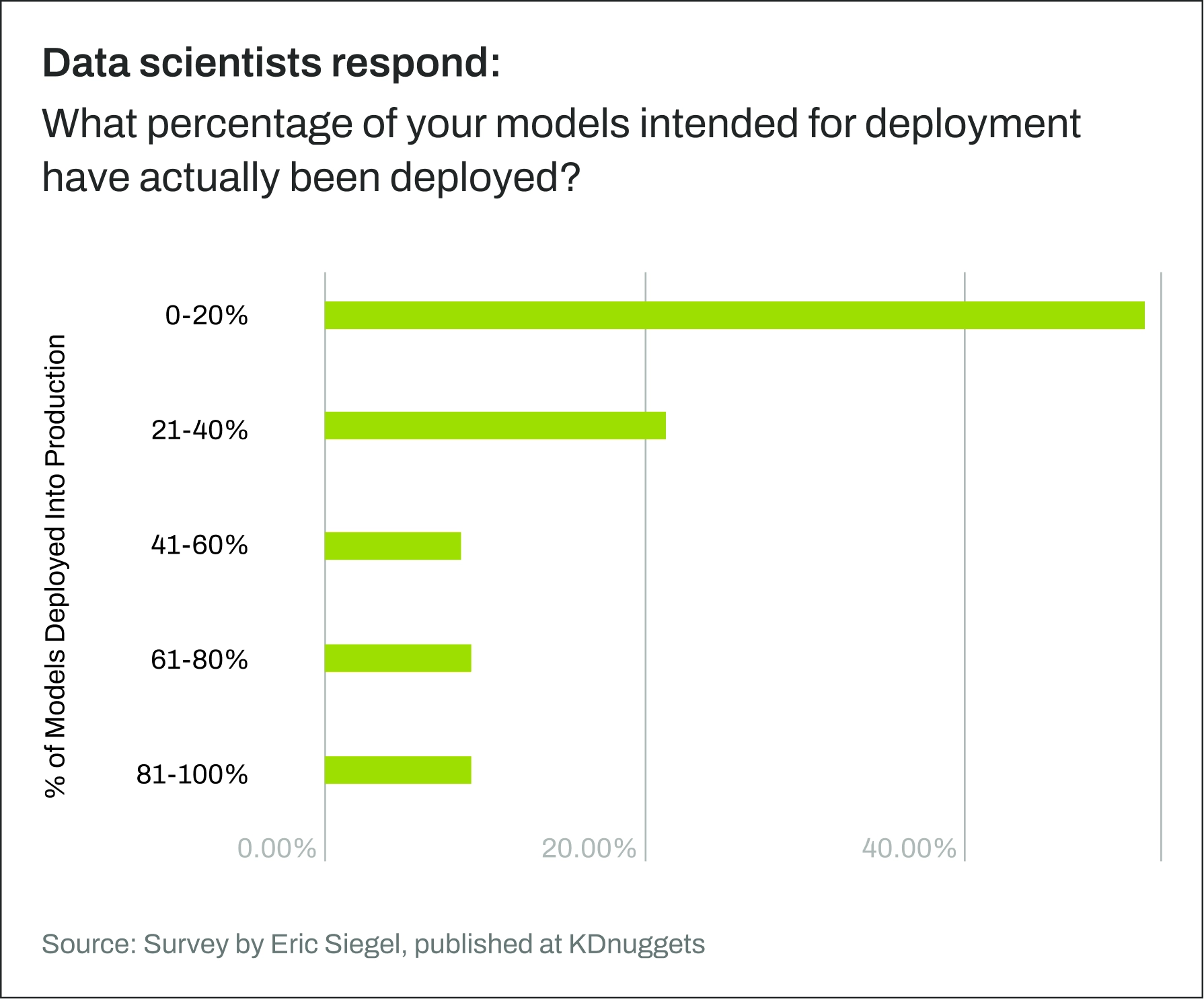In a nutshell:
- Low-code predictive analytics platforms offer real AI functionality and reliable predictions.
- Hand-crafted code may not be suitable for every team or business challenge, especially since data scientists can be difficult to hire and retain.
- Low-code platforms are built by data science experts and software engineers, providing real outputs and continuous innovation.
- Automation of data science tasks, such as AutoML, is gaining momentum even among skilled data scientists.
- Low-code platforms like Pecan enable analysts and business users to perform data science tasks, increasing predictive modeling capacity and delivering higher ROI.
The myth: Low-code predictive analytics platforms can’t offer the functionality and results of “real AI.”
The reality: Low-code predictive analytics platforms like Pecan are indeed “real AI.” They produce real, reliable predictions, using real, sophisticated techniques based on state-of-the-art data science approaches.
Though the code of platforms like Pecan may not be visible externally, the actual workings of low-code predictive analytics platforms are likely developed and tested much more deeply than single-use code created by one person. And low-code approaches make it possible to scale AI to address more concerns within your business — at a lower cost and with greater speed.
Let’s dig into that reality a bit further.
Artisanal code isn’t right for every team or every business challenge
There’s always a little mystique around science and math. With data scientists’ work called “sexy” and “magical,” many companies have engaged in what appears to be the paragon of data-driven activity: hiring teams of data scientists.
While data scientists often do amazing work, the limitations of common methods of adopting data science in industry have become apparent in the last few years. Data scientists are difficult to hire and retain, are expensive, and are sometimes more interested in experimenting with innovative AI methods than in rapidly solving concrete business problems.
More painfully, even after data scientists expend great effort on developing models, those models are rarely put into production. (We’ve detailed these challenges before on the blog.)
According to the results of a recent survey published by KDnuggets, most data scientists say that at least 80% of their models never see deployment into production.
-

- Most data scientists report that at least 80% of their models are never deployed
So while hand-crafted, purpose-built code may appear to be the ultimate way to do predictive modeling, newer low-code solutions — like Pecan — are built for business users and analysts. These team members may use less code, but they’re focused on addressing their teams’ primary problems, and they’re empowered to immediately apply their models’ outputs to solve those challenges.
Real code underlies low-code predictive analytics platforms — and they produce real outputs
What’s often left out of those “myth” conversations is that low-code predictive analytics platforms are built with code built by data science experts and sophisticated software engineers. Platforms like Pecan are put to the test in many different industries and business environments, where they’re subjected to highly variable datasets.
The AI and software engineering experts who build these platforms work behind the scenes to find generalizable approaches to varied data problems. They apply state-of-the-art techniques and test their methods thousands of times. That’s not true of purpose-built, hand-written code.
For example, a data scientist cleaning a dataset must develop a one-off strategy for performing various time-consuming cleaning tasks on that single dataset. In contrast, Pecan’s automated data cleaning and prep process was developed by a team of experts. It’s been used on hundreds of datasets across different business settings and has been proven reliable.
Other aspects of Pecan's feature selection and modeling workflow demonstrate the same reliability and continuous innovation. By working with varied customers, Pecan gains new insights into how certain data points or methods increase the accuracy and utility of models for particular use cases. Those improvements can be incorporated into the platform for the benefit of all users. Refined, trustworthy, powerful code underlies every automated task.
It’s also important to note that the automation of data science tasks, such as automated model building and evaluation (AutoML), is gaining momentum even among highly skilled data scientists. These data scientists could execute those tasks with fully hand-crafted code, but they’re increasingly recognizing the huge gains in efficiency that automated processes offer, without sacrificing quality.
Pecan’s low-code approach to predictive modeling incorporates the best of the cutting-edge innovations in automating data science, with additional automation and a user interface designed specifically to enable analysts to perform data science functions.
Scaling real AI for rapid ROI — without increasing data science resources
Low-code platforms like Pecan extend the positive impact of predictive analytics beyond the narrow range of projects that a data science team — often strapped for time and resources — can realistically accomplish. This added predictive modeling capacity makes it possible to realize the benefits of data science across the organization.
Data analysts and line-of-business users can employ low-code predictive analytics platforms to perform many data science tasks with great business impact. Those results can be directly linked to real business results for their teams.
These teams know their data and their challenges best, so putting predictive analytics directly into their hands allows them to refine and optimize programs with much more precision, expediting results and delivering higher ROI.
That’s the reality of low-code predictive analytics platforms today. Moving beyond inaccurate myths and embracing that reality can transform your business.
Start building your own model now, or get in touch for a personal tour.





